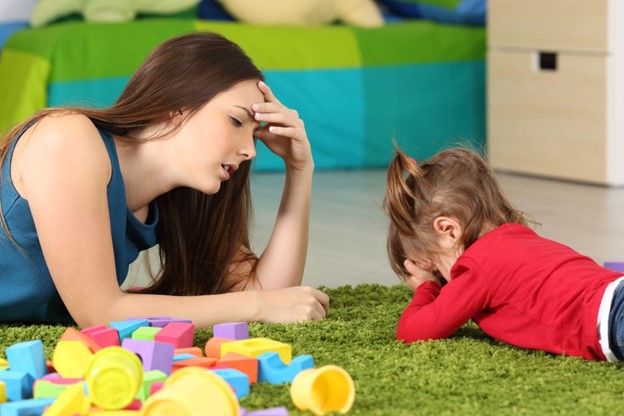

HOME VS. DAYCARE: UNVEILING KIDS DUAL BEHAVIORS

3/6/24
At daycare, kids put on their best behavior, showcasing their inner "little angels" while saving the wild antics for home turf. But fear not, it's all part of the game! Daycare pros have honed their skills through years of wrangling little ones, giving them an edge over us novice parents. Ready for some insider tips? Here's the scoop!
Simplify Transitions:
The art of preschool is the art of repetition. Stick to predictable routines to make transitions smoother. This predictability provides a sense of security for children. Predictability feels safe, particularly for kids who are pre-verbal or working on language skills. That sense of security breeds confidence in toddlers and preschoolers, and it’s for this reason that most daycares keep their routines as simple as possible, with consistent times for snacks, lunch, play and naps.
Offer Warnings:
Offer a warning before the start of a new activity. Sing a song to cue transitions. Tell your child in advance that when you sing a little song, it’s time to clean up. Children accept transitions better when they know what’s coming next.
Eat Together:
Prioritize family meals to encourage healthier eating habits. Shared meals promote bonding and positive eating behaviors. Avoid offering alternative meals; stick to what's served. Seeing others eating diverse foods helps children, especially picky eaters, develop diverse eating habits.
Fun Cleaning:
Turn tidying up into a game or imaginative play. Put the music on and sing while you pick up toys. Or turn it into a counting game, who can pick up the most toys. Making chores enjoyable and fun encourages participation.
Ignore Whining:
Avoid giving attention to negative behaviors like whining. Ignoring minor complaints discourages repetition. You may be amazed at how quickly tantrums fizzle out when your child realizes they're not making progress. After they've calmed down, take the opportunity to discuss why their behavior wasn't acceptable and explore the reasons behind their upset feelings.
Defuse Tantrums:
Not all tantrums can be ignored. Sometimes, bringing attention to their physical bodies helps to facilitate them calming down. Eg. “I see you’re very upset. Your body is moving really fast and wild.” Giving them a firm hug, or a touch to the cheek or sitting with them and trying some deep breaths, often does the trick.
Name Big Emotions:Help children identify and express their emotions.
Understanding emotions fosters better communication and problem-solving skills. Fill a few bottles with different colored water. Add various distractions into each bottle, like a plastic frog or glitter or a few sea shells. Name each bottle with an emotion and little sentence and let them shake the bottles if they’re still really angry, tip them back and forth to calm down, and read the poems with their teacher
eg. Green, green, green I was feeling so mean.
Red, red, red, I got a bump on my head.
Yellow helps me feel mellow.
Black helps me get my happy back
Teaching self-soothing techniques promotes emotional resilience.
Turn Taking Instead of Sharing: Encourage turn-taking instead of forcing sharing. This promotes fairness and reduces conflicts.
Be Consistent: Allow strategies the necessary time to work, and maintain consistency in their application. Patience and consistency yield long-term results, and above all, implement them with kindness and calmness.
© 2024 Pop-Ins - All Rights Reserved
Site by
